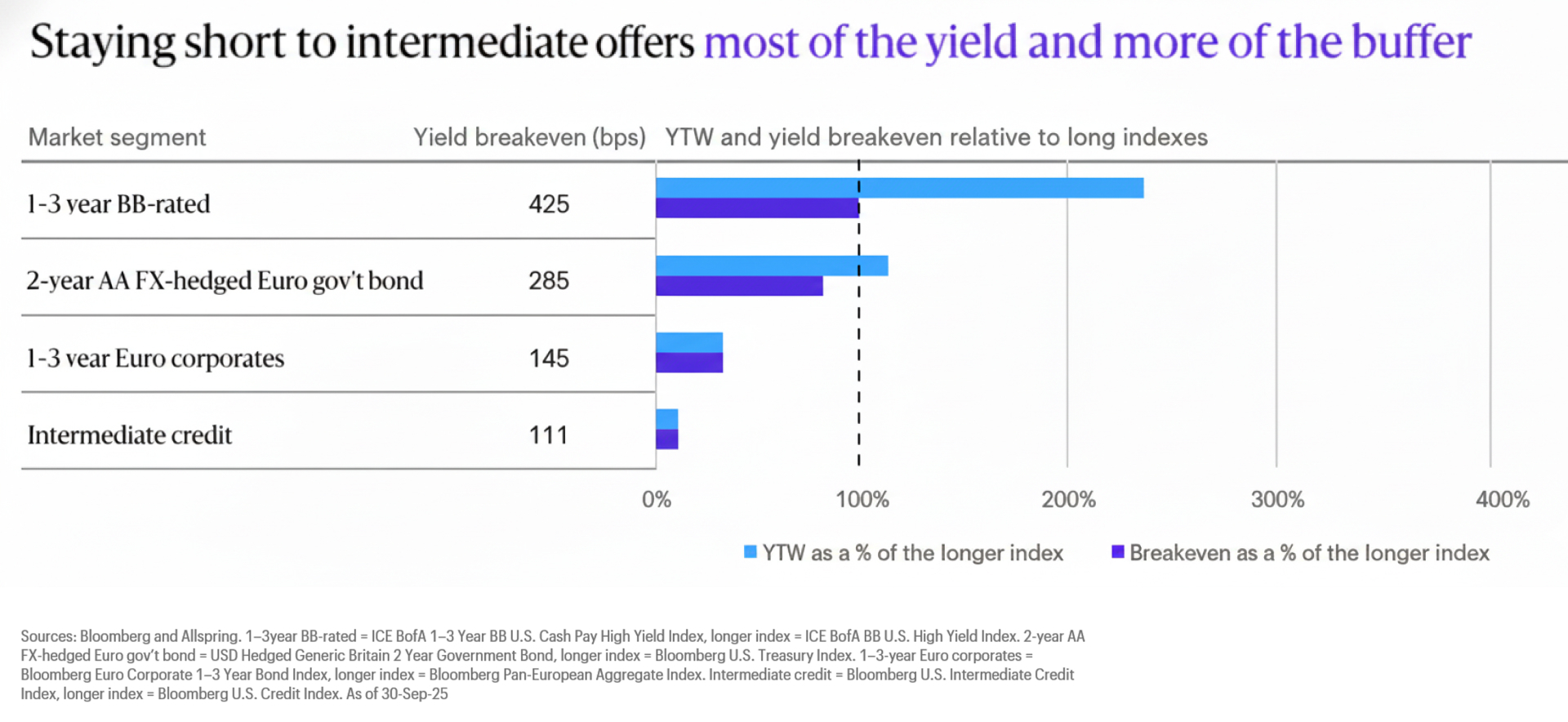How to earn income and sleep at night in today’s volatile market
The past year has been a masterclass in macro whiplash. Bond yields that once surged on inflation fears are now retreating on signs of cooling growth. Policy expectations are shifting week to week.
And as spreads tighten and volatility lingers just below the surface, fixed income investors face a critical question: where can they still find compelling income without sacrificing resilience?
Few are better placed to answer that question than Noah Wise, Senior Portfolio Manager and Head of Global Macro Strategy for Allspring’s Plus Fixed Income team.
With more than two decades in markets, Wise has navigated the full arc of rate cycles, crises, and policy pivots. He oversees strategies across global credit and asset allocation, steering portfolios spanning mutual funds, institutional mandates, and multi-asset vehicles.
In this week’s Q&A, Wise shares his latest portfolio moves, the indicator that caught his eye, and the fixed income segments offering both income and insulation in an increasingly fragile market environment.

What’s your most recent significant portfolio change, and why?
After the U.S. 10-year Treasury yield reached around 4%, we made the decision to close our duration overweight and return to a neutral position.
The recent decline in interest rates has shifted the risk-reward balance, and in our view, current valuations no longer justify a strong directional bet on interest rate exposure.
At the same time, we increased our allocation to Australian rates. Australia had underperformed earlier in the third quarter, and with inflation dynamics improving, the entry point became significantly more attractive relative to other developed markets.
Within spread sectors, we’ve continued to prioritise quality. We increased our overweight to securitised assets, specifically agency mortgage-backed securities (MBS) and asset-backed securities (ABS), which remain our largest allocation.
In contrast, we’ve remained cautious on high-yield corporate bonds, where spreads are tight and offer limited compensation for risk.
Which indicator stood out on your watchlist this week?
There’s certainly less data to chew on than normal due to the US government shutdown, but Fed Chair Powell’s comments on quantitative tightening suggested an earlier‑than‑expected end to balance-sheet runoff.
We also saw weaker-than-expected labour market data in Australia, which provided a strong bid to local government bonds.
What is the most recent investment you have trimmed or sold, and what drove this decision?
We trimmed European high-yield credit after strong performance and rotated into U.S. BBs, which have lagged. With spreads near multi‑decade tights and episodes of idiosyncratic stress still popping up, we prefer owning higher‑quality carry and keeping dry powder.
What’s your favourite chart or data point from this week?

This week’s standout chart highlights a critical opportunity for income-focused investors: how different credit segments stack up on both yield and downside protection relative to the broader market.
Breakevens - defined as the amount yields would need to rise before an investor experiences a negative return - are a powerful measure of resilience in volatile conditions.
The takeaway is compelling. Several segments are delivering mid-single-digit returns in a neutral rate environment while also offering substantial buffers against rising yields.
Take 1–3 year BB-rated bonds: yields in this segment would need to increase by 4.25%, or 425 basis points, over a twelve-month period before an investor starts losing money.
That’s more than double the downside protection available in the broader high-yield market, shown by the dark blue bars on the chart. The income sacrifice for that extra protection is minimal.
As illustrated by the light blue bars, the 1–3 year BB segment provides roughly 95% of the yield delivered by the overall high-yield index. Similar dynamics are evident in other markets, including 2-year UK bonds, 1–3 year Euro corporates, and intermediate U.S. credit.
In short, investors can capture attractive levels of income while significantly enhancing downside protection, an appealing proposition in a market where policy expectations can shift overnight.
What was your weekly high – a standout market moment or highlight?
Agency MBS and other securitised pockets continued to demonstrate resilient excess returns and supportive technicals as investors looked for high‑quality carry.
That’s been helpful for our largest overweight.
What was your weekly low – a market disappointment or challenge?
Ongoing tariff headlines, a U.S. government shutdown, and a few idiosyncratic high-yield bankruptcies reminded everyone that spreads are tight, and risk premia are thin. It’s exactly the type of environment where we want high-quality carry.
Choose; don’t chase.
What first drew you to markets or this sector and what continues to keep you inspired today?
Fixed income markets are where macro and micro meet daily - policy, growth, inflation, and security‑level fundamentals are all priced into a single yield.
That complexity creates constant novelty, and with it, an ever-evolving set of new challenges that require different perspectives and combinations of tools to meet them.
What has kept me coming back are the relationships I’ve made at our firm, with our clients, and our partners.
What’s one piece of advice you’d give to new investors?
For any investment idea, use your head to know the antithesis and use your heart to believe the thesis.
Said another way, if you understand where you can be wrong, then it frees you to invest with more conviction. Both aspects are necessary to turn luck into repeatable success.
How do you unwind when you’re not thinking about the market?
Kayaking with my wife and coaching my son’s baseball team in the summer.
Downhill skiing with my family and cross-country skiing with my dog in the winter.
5 topics

